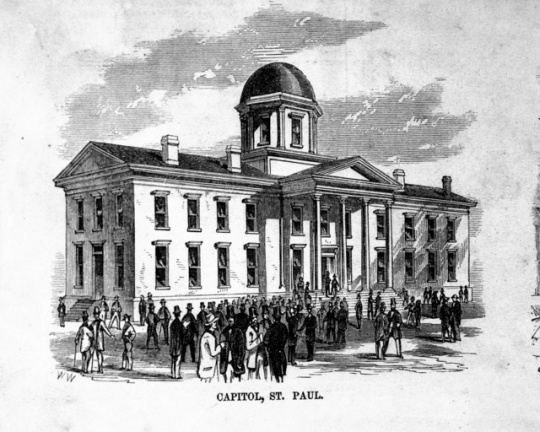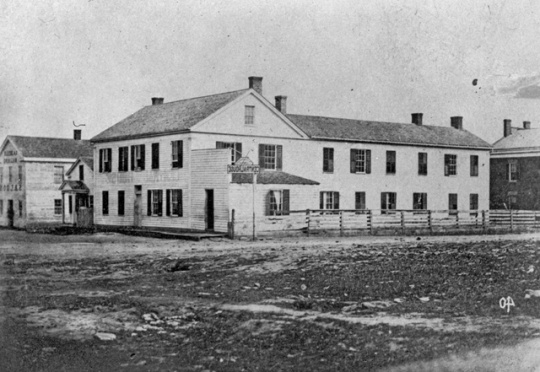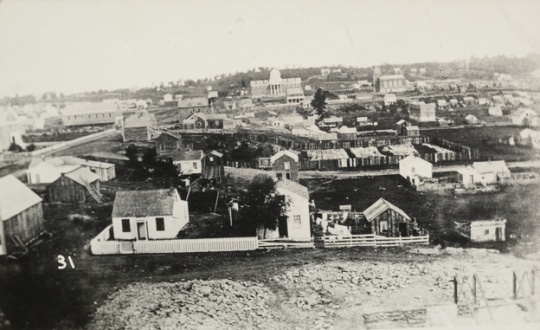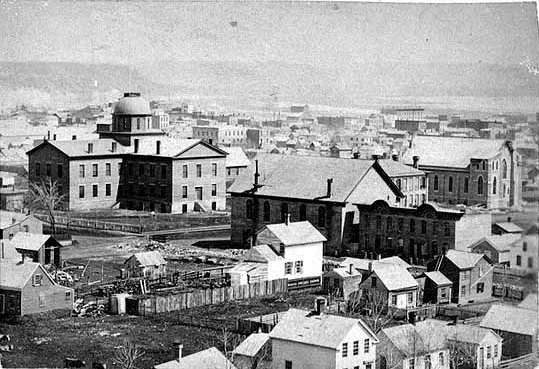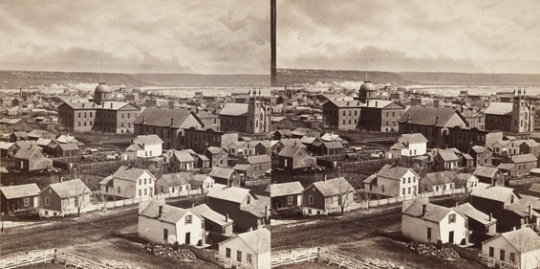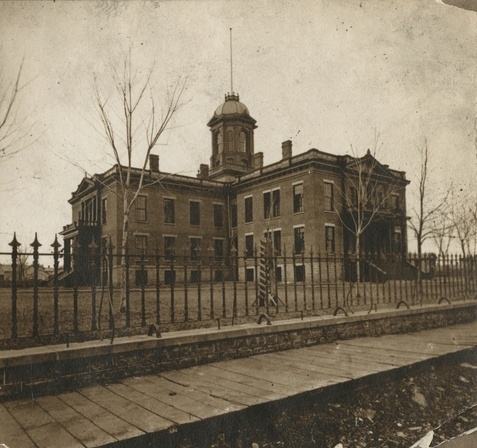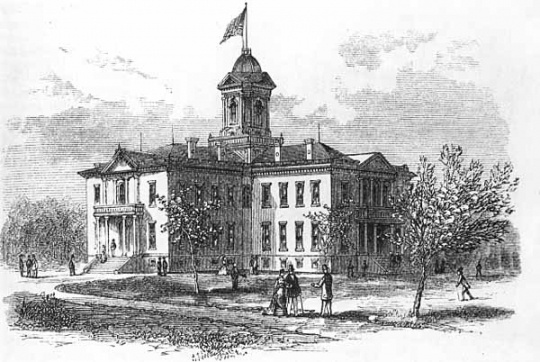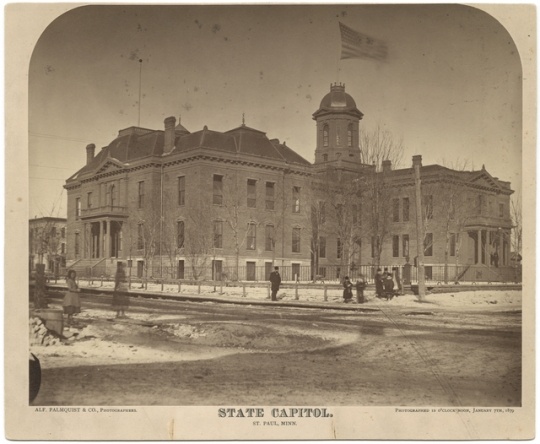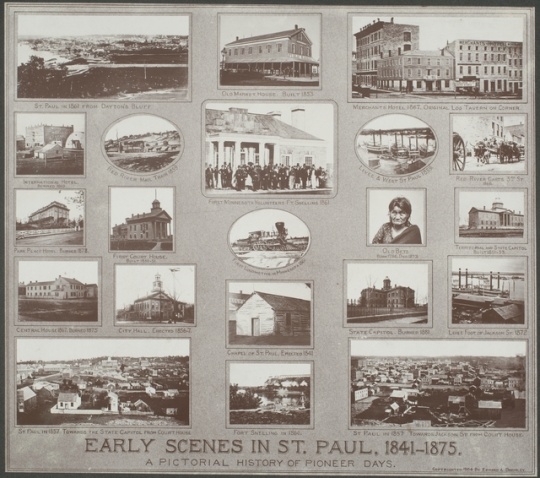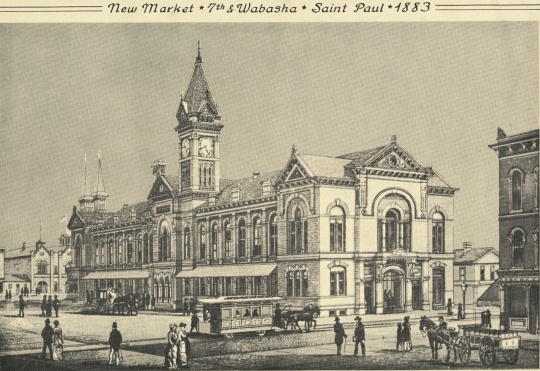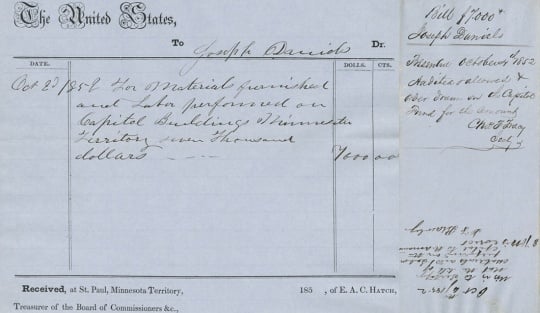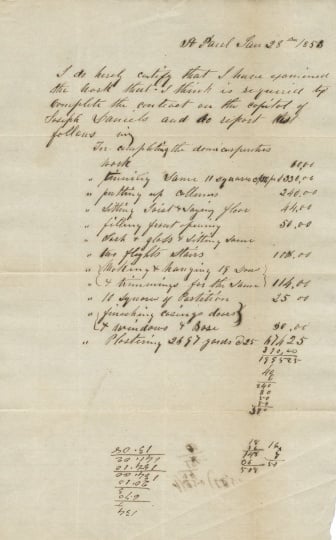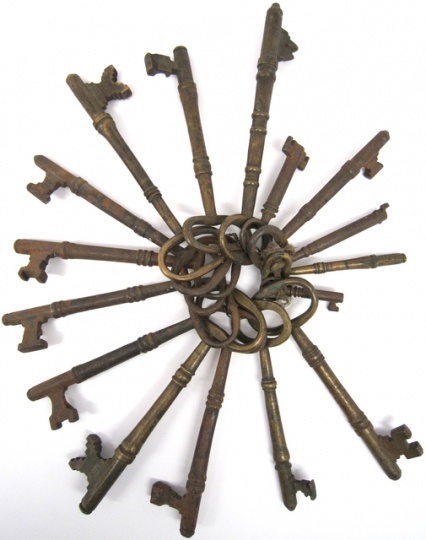Minnesota's First State Capitol
Bibliography
"A Big Blaze. Reviewing the Scene the Day After it Happened." St. Paul Daily Globe, March 3, 1881.
http://chroniclingamerica.loc.gov/lccn/sn83025287/1881-03-03/ed-1/seq-1
120.J.3.1B
Annual and Biennial Reports, 1878–1881
Minnesota Treasurer's Office
State Archives Collection, Minnesota Historical Society, St. Paul
Description: Annual (1858–1920, 1980, 1996–2001) and biennial (1921–1940) reports.
"Annual Message of Gov. John S. Pillsbury, Delivered to the Minnesota Legislature Jan. 9, 1879.” St. Paul Daily Globe, January 10, 1879.
http://chroniclingamerica.loc.gov/lccn/sn83025287/1879-01-10/ed-1/seq-2
Annual Report of the State Auditor, to the Legislature of Minnesota. St. Paul: Wm. R. Marshall, Incidental Printer, 1861–1874.
Annual Report of the State Auditor, to the Legislature of Minnesota. St. Paul: Saint Paul Press, 1875–1879.
Brown, Robert M. "A Territorial Delegate in Action." Minnesota History 31, no. 3 (September 1950): 172–178.
http://collections.mnhs.org/mnhistorymagazine/articles/31/v31i03p172-178.pdf
"Capitol Extension. Bids Opened for the Work, but No Awards Till Monday." Saint Paul Daily Globe, June 8, 1878.
http://chroniclingamerica.loc.gov/lccn/sn83025287/1878-06-08/ed-1/seq-4
"The Capitol Extension. It Begins to Fall by Piecemeal, the Vault Going First." St. Paul Daily Globe, September 22, 1878.
http://chroniclingamerica.loc.gov/lccn/sn83025287/1878-09-22/ed-1/seq-8
"City Globules." St. Paul Daily Globe, May 25, 1878.
http://chroniclingamerica.loc.gov/lccn/sn83025287/1878-05-25/ed-1/seq-4
"The Defective Capitol. St. Paul Daily Globe, September 30, 1878.
http://chroniclingamerica.loc.gov/lccn/sn83025287/1878-09-30/ed-1/seq-2
"Destroyed by Fire. The Capitol in Flames and Laid in Ruins." Princeton Union, March 10, 1881.
http://chroniclingamerica.loc.gov/lccn/sn83016758/1881-03-10/ed-1/seq-3
"Fire at the Capitol." St. Paul Daily Pioneer and Democrat, July 10, 1857.
Gorman, Willis A. "Annual Message of the Governor of Minnesota Territory to the Legislative Assembly at the Session Commencing January 4, 1854." St. Paul: Olmsted & Brown, Territorial Printers, 1854.
"Here She Spreads. Figuratively Referring to the Capitol Enlargement." St. Paul Daily Globe, March 14, 1878.
http://chroniclingamerica.loc.gov/lccn/sn83025287/1878-03-14/ed-1/seq-4
"Historical St. Paul." St. Paul Daily Globe, December 31, 1882.
http://chroniclingamerica.loc.gov/lccn/sn83025287/1882-12-31/ed-1/seq-9
"In Ashes. The State Capitol in St. Paul Burned Last Evening." Minneapolis Tribune, March 2, 1881.
"Incendiary Torch. The State Capitol Utterly Destroyed by Fire." St. Paul Daily Globe, March 2, 1881.
http://chroniclingamerica.loc.gov/lccn/sn83025287/1881-03-02/ed-1/seq-1
Kane, Betty. "A Case Study in Lively Futility: The 1876 Legislature." Minnesota History 45, no. 6 (Summer 1977): 223–240.
http://collections.mnhs.org/MNHistoryMagazine/articles/45/v45i06p223-240.pdf
"Market House." St. Paul Daily Globe, December 31, 1882.
http://chroniclingamerica.loc.gov/lccn/sn83025287/1882-12-31/ed-1/seq-23
Minnesota Legislature. Appendix. Minnesota Territorial Statutes, 1851.
https://www.revisor.mn.gov/statutes?id=Appendix&year=1851
——— . Session Laws of Minnesota, 1851, Chapter V.
https://www.revisor.mn.gov/laws/?year=1851&type=0&group=General+Laws&doctype=Chapter&id=5
——— . Session Laws of Minnesota, 1852, Chapter XIII.
https://www.revisor.mn.gov/laws/?year=1852&type=0&group=General+Laws&doctype=Chapter&id=13
——— . Session Laws of Minnesota, 1853, Memorial 3.
https://www.revisor.mn.gov/laws/?year=1853&type=0&group=General+Laws&doctype=Memorial&id=3
——— . Session Laws of Minnesota, 1858, Chapter XXVI.
https://www.revisor.mn.gov/laws/?year=1858&type=0&group=General+Laws&doctype=Chapter&id=26
——— . Session Laws of Minnesota, 1867, Chapter CXXII.
https://www.revisor.mn.gov/laws/?year=1867&type=0&group=General+Laws&doctype=Chapter&id=122
——— . Session Laws of Minnesota, 1868, Chapter CXXII.
https://www.revisor.mn.gov/laws/?year=1868&type=0&group=General+Laws&doctype=Chapter&id=122
——— . Session Laws of Minnesota, 1871, Chapter CI.
https://www.revisor.mn.gov/laws/?year=1871&type=0&group=General+Laws&doctype=Chapter&id=101
——— . Session Laws of Minnesota, 1871, Chapter CII.
https://www.revisor.mn.gov/laws/?year=1871&type=0&group=General+Laws&doctype=Chapter&id=102
——— . Session Laws of Minnesota, 1873, Chapter CXXV. An Act to Provide for an Extension of the Capitol Building.
https://www.revisor.mn.gov/laws/?year=1873&type=0&group=General+Laws&doctype=Chapter&id=125
——— . Session Laws of Minnesota, 1874, Chapter CXXXI. An Act to Appropriate Money for Certain Purposes Therein Named. [A.M. Radcliff is named for services as architect in drawing plans and specs, and supervising construction of the capitol extension - $225.]
https://www.revisor.mn.gov/laws/?year=1874&type=0&group=General+Laws&doctype=Chapter&id=131
——— . Session Laws of Minnesota, 1874, Chapter CXXXII.
https://www.revisor.mn.gov/laws/?year=1874&type=0&group=General+Laws&doctype=Chapter&id=132
——— . Session Laws of Minnesota, 1878, Chapter 104. An Act to Appropriate Money for the Enlargement of the Western Wing of the Capitol Building.
https://www.revisor.mn.gov/laws/?year=1878&type=0&group=General+Laws&doctype=Chapter&id=104
——— . Session Laws of Minnesota, 1883, Chapter 170
https://www.revisor.mn.gov/laws/?year=1883&type=0&group=General+Laws&doctype=Chapter&id=170
Minnesota Secretary of State. Organic Act of 1849.
http://www.sos.state.mn.us/about-minnesota/minnesota-government/organic-act-of-1849/
Ramsey, Alexander. "Message of the Governor of Minnesota to the Legislative Assembly, Delivered January 7, A.D., 1851." St. Paul: J. M. Goodhue, 1851.
——— . "Message of the Governor of Minnesota to the Legislative Assembly, with Accompanying Documents, Delivered January 13, 1852." St. Paul: J. M. Goodhue, 1852.
——— . "Message of the Governor of Minnesota to the Legislative Assembly, with Accompanying Documents, Delivered January 26, 1853." St. Paul: J .M. Goodhue, 1853.
Records, 1851–1854
Minnesota Territorial Archives, Minnesota Board of Commissioners of Public Buildings
State Archives Collection, Minnesota Historical Society, St. Paul
Description: Minute book, deed for territorial capitol site, receipt books, and other materials relating to the construction of the territorial capitol and prison.
http://www.mnhs.org/library/findaids/gr00998.xml
Thompson, Neil B. "A Half Century of Capital Conflict: How St. Paul Kept the Seat of Government." Minnesota History 43, no. 7 (Fall 1973): 238–254. http://collections.mnhs.org/mnhistorymagazine/articles/43/v43i07p238-254.pdf
Chronology
1849
1851
1851
1851
1853
1853
1854
1857
1857
1858
1867
1871
1873
1878
1881
Bibliography
"A Big Blaze. Reviewing the Scene the Day After it Happened." St. Paul Daily Globe, March 3, 1881.
http://chroniclingamerica.loc.gov/lccn/sn83025287/1881-03-03/ed-1/seq-1
120.J.3.1B
Annual and Biennial Reports, 1878–1881
Minnesota Treasurer's Office
State Archives Collection, Minnesota Historical Society, St. Paul
Description: Annual (1858–1920, 1980, 1996–2001) and biennial (1921–1940) reports.
"Annual Message of Gov. John S. Pillsbury, Delivered to the Minnesota Legislature Jan. 9, 1879.” St. Paul Daily Globe, January 10, 1879.
http://chroniclingamerica.loc.gov/lccn/sn83025287/1879-01-10/ed-1/seq-2
Annual Report of the State Auditor, to the Legislature of Minnesota. St. Paul: Wm. R. Marshall, Incidental Printer, 1861–1874.
Annual Report of the State Auditor, to the Legislature of Minnesota. St. Paul: Saint Paul Press, 1875–1879.
Brown, Robert M. "A Territorial Delegate in Action." Minnesota History 31, no. 3 (September 1950): 172–178.
http://collections.mnhs.org/mnhistorymagazine/articles/31/v31i03p172-178.pdf
"Capitol Extension. Bids Opened for the Work, but No Awards Till Monday." Saint Paul Daily Globe, June 8, 1878.
http://chroniclingamerica.loc.gov/lccn/sn83025287/1878-06-08/ed-1/seq-4
"The Capitol Extension. It Begins to Fall by Piecemeal, the Vault Going First." St. Paul Daily Globe, September 22, 1878.
http://chroniclingamerica.loc.gov/lccn/sn83025287/1878-09-22/ed-1/seq-8
"City Globules." St. Paul Daily Globe, May 25, 1878.
http://chroniclingamerica.loc.gov/lccn/sn83025287/1878-05-25/ed-1/seq-4
"The Defective Capitol. St. Paul Daily Globe, September 30, 1878.
http://chroniclingamerica.loc.gov/lccn/sn83025287/1878-09-30/ed-1/seq-2
"Destroyed by Fire. The Capitol in Flames and Laid in Ruins." Princeton Union, March 10, 1881.
http://chroniclingamerica.loc.gov/lccn/sn83016758/1881-03-10/ed-1/seq-3
"Fire at the Capitol." St. Paul Daily Pioneer and Democrat, July 10, 1857.
Gorman, Willis A. "Annual Message of the Governor of Minnesota Territory to the Legislative Assembly at the Session Commencing January 4, 1854." St. Paul: Olmsted & Brown, Territorial Printers, 1854.
"Here She Spreads. Figuratively Referring to the Capitol Enlargement." St. Paul Daily Globe, March 14, 1878.
http://chroniclingamerica.loc.gov/lccn/sn83025287/1878-03-14/ed-1/seq-4
"Historical St. Paul." St. Paul Daily Globe, December 31, 1882.
http://chroniclingamerica.loc.gov/lccn/sn83025287/1882-12-31/ed-1/seq-9
"In Ashes. The State Capitol in St. Paul Burned Last Evening." Minneapolis Tribune, March 2, 1881.
"Incendiary Torch. The State Capitol Utterly Destroyed by Fire." St. Paul Daily Globe, March 2, 1881.
http://chroniclingamerica.loc.gov/lccn/sn83025287/1881-03-02/ed-1/seq-1
Kane, Betty. "A Case Study in Lively Futility: The 1876 Legislature." Minnesota History 45, no. 6 (Summer 1977): 223–240.
http://collections.mnhs.org/MNHistoryMagazine/articles/45/v45i06p223-240.pdf
"Market House." St. Paul Daily Globe, December 31, 1882.
http://chroniclingamerica.loc.gov/lccn/sn83025287/1882-12-31/ed-1/seq-23
Minnesota Legislature. Appendix. Minnesota Territorial Statutes, 1851.
https://www.revisor.mn.gov/statutes?id=Appendix&year=1851
——— . Session Laws of Minnesota, 1851, Chapter V.
https://www.revisor.mn.gov/laws/?year=1851&type=0&group=General+Laws&doctype=Chapter&id=5
——— . Session Laws of Minnesota, 1852, Chapter XIII.
https://www.revisor.mn.gov/laws/?year=1852&type=0&group=General+Laws&doctype=Chapter&id=13
——— . Session Laws of Minnesota, 1853, Memorial 3.
https://www.revisor.mn.gov/laws/?year=1853&type=0&group=General+Laws&doctype=Memorial&id=3
——— . Session Laws of Minnesota, 1858, Chapter XXVI.
https://www.revisor.mn.gov/laws/?year=1858&type=0&group=General+Laws&doctype=Chapter&id=26
——— . Session Laws of Minnesota, 1867, Chapter CXXII.
https://www.revisor.mn.gov/laws/?year=1867&type=0&group=General+Laws&doctype=Chapter&id=122
——— . Session Laws of Minnesota, 1868, Chapter CXXII.
https://www.revisor.mn.gov/laws/?year=1868&type=0&group=General+Laws&doctype=Chapter&id=122
——— . Session Laws of Minnesota, 1871, Chapter CI.
https://www.revisor.mn.gov/laws/?year=1871&type=0&group=General+Laws&doctype=Chapter&id=101
——— . Session Laws of Minnesota, 1871, Chapter CII.
https://www.revisor.mn.gov/laws/?year=1871&type=0&group=General+Laws&doctype=Chapter&id=102
——— . Session Laws of Minnesota, 1873, Chapter CXXV. An Act to Provide for an Extension of the Capitol Building.
https://www.revisor.mn.gov/laws/?year=1873&type=0&group=General+Laws&doctype=Chapter&id=125
——— . Session Laws of Minnesota, 1874, Chapter CXXXI. An Act to Appropriate Money for Certain Purposes Therein Named. [A.M. Radcliff is named for services as architect in drawing plans and specs, and supervising construction of the capitol extension - $225.]
https://www.revisor.mn.gov/laws/?year=1874&type=0&group=General+Laws&doctype=Chapter&id=131
——— . Session Laws of Minnesota, 1874, Chapter CXXXII.
https://www.revisor.mn.gov/laws/?year=1874&type=0&group=General+Laws&doctype=Chapter&id=132
——— . Session Laws of Minnesota, 1878, Chapter 104. An Act to Appropriate Money for the Enlargement of the Western Wing of the Capitol Building.
https://www.revisor.mn.gov/laws/?year=1878&type=0&group=General+Laws&doctype=Chapter&id=104
——— . Session Laws of Minnesota, 1883, Chapter 170
https://www.revisor.mn.gov/laws/?year=1883&type=0&group=General+Laws&doctype=Chapter&id=170
Minnesota Secretary of State. Organic Act of 1849.
http://www.sos.state.mn.us/about-minnesota/minnesota-government/organic-act-of-1849/
Ramsey, Alexander. "Message of the Governor of Minnesota to the Legislative Assembly, Delivered January 7, A.D., 1851." St. Paul: J. M. Goodhue, 1851.
——— . "Message of the Governor of Minnesota to the Legislative Assembly, with Accompanying Documents, Delivered January 13, 1852." St. Paul: J. M. Goodhue, 1852.
——— . "Message of the Governor of Minnesota to the Legislative Assembly, with Accompanying Documents, Delivered January 26, 1853." St. Paul: J .M. Goodhue, 1853.
Records, 1851–1854
Minnesota Territorial Archives, Minnesota Board of Commissioners of Public Buildings
State Archives Collection, Minnesota Historical Society, St. Paul
Description: Minute book, deed for territorial capitol site, receipt books, and other materials relating to the construction of the territorial capitol and prison.
http://www.mnhs.org/library/findaids/gr00998.xml
Thompson, Neil B. "A Half Century of Capital Conflict: How St. Paul Kept the Seat of Government." Minnesota History 43, no. 7 (Fall 1973): 238–254. http://collections.mnhs.org/mnhistorymagazine/articles/43/v43i07p238-254.pdf
















